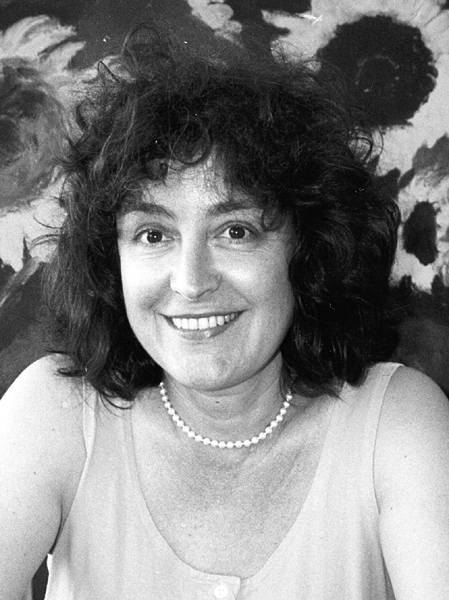
Klara Kedem
Mary Upson Visiting Professor
kedem@cs.cornell.edu
http://www.cs.cornell.edu/kedem
PhD Tel Aviv, 1989
My research area is Computational Geometry with
applications to problems in computer vision and bio- information. The attempt to deal with practical problems (like shape
comparison) by investigating their
geometric nature, yields a better theoretical understanding of the problems and provides sound and efficient
algorithms. Among the theoretical problems I work on are problems in geometric optimization, such as covering a
set of points by a given number of shapes and facility location. I have investigated the |
 |
minimum Hausdorff distance as a tool for measuring shape resemblance between images. Many practical problems in the area of shape comparison seek a fully
automated solution. The robustness of the minimum Hausdorff distance lends itself to such
problems. In the last two years I have looked into shape comparison problems in three dimensions. Such
problems arise in many life-science disciplines. In computational molecular biology I have come up with a new metric, the
URMS, to measure substructure resemblance between proteins. This measure has been implemented and further applied to the analysis of molecular dynamics. It proves superior to previously used measures. With the department of life sciences at Ben Gurion University I have been looking at dendrite shape comparison and classification. Here we applied a three dimensional Hausdorff distance for the problem and are in the midst of devising new measures.
Professional Activities
- Editorial board: Pattern Recognition Society
Journal.
- Reviewer: Israeli-US Bi-National Science Foundation; The Academia - Ministry of
Science, Israel; Pattern Recognition
- Journal; International Journal of Computational Geometry
and Applications.
Lectures
- Fast detection of geometric
substructure in proteins, Tel-Aviv
University, Computational Geometry
seminar, 1998.
- —. Dagstuhl Workshop on
Computational Geometry, Dagstuhl,
Germany, 1999.
- The advantages of the URMS for
determining protein similarity,
Ben-Gurion University, Computer
Science colloquium, 1999.
Publications
- Getting around a lower bound for the
minimum Hausdorff distance,
Computational Geometry: Theory and
Applications, 10(1998), pp. 197-202 (with L.P.
Chew).
- Enclosing k points in the smallest
enclosing axis parallel rectangle,
Information Processing Letters,
65(1998), pp. 95-99 (with M. Segal).
-
On some geometric selection and
optimization problems via sorted
matrices, Computational Geometry:
Theory and Applications, 11(1998),
pp. 17-28, (with A. Glozman and G.
Shpitalnik).
-
Geometric applications of posets,
Computational Geometry: Theory and
Applications, 11(1998), pp. 143-156,
(with M. Segal).
- Constrained Square Center Problems,
Scandinavian Workshop on Algorithm
Theory (SWAT'98), Lecture Notes in Computer Science
1432, Springer-Verlag, pp. 95-106,
Sweden, 1998, (with M. Katz and M.
Segal).
- Geometric Pattern Matching in
d-Dimensional Space, Discrete and Computational
Geometry, 21(1999), pp. 257-274,
(with L.P. Chew, D. Dor and A.
Efrat).
- Computing a double-ray center for a
planar point set, International Journal of
Computational
Geometry and Applications, 9(2)1999,
pp. 103-123, (with A. Glozman and
G. Shpitalnik).
- Fast detection of geometric
substructure in proteins, International Conference on
Computational Molecular Biology, pp.
104-113, France, 1999,
(with L.P. Chew, D.P. Huttenlocher
and J. Kleinberg).
|

